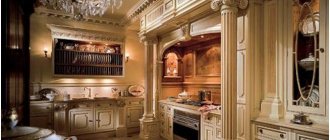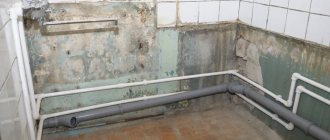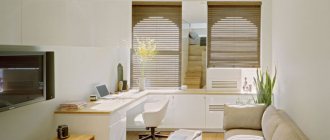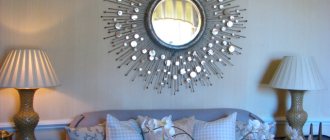I decided to take up a healthy lifestyle seriously, but it was somehow expensive to leave the house somewhere to look for horizontal bars, morning jogging is also not my thing.
I wanted to buy myself a horizontal bar for the wall, so I started looking around online stores and found a more or less suitable option at a price of 2,500 rubles. And there, among all his photographs, there was a drawing of him, or rather a drawing indicating his dimensions.
I thought why not do it myself, especially since the garage is a five-minute walk away, there is also welding.
I cut all the necessary components: 1) Three square pipes with a cross-section of 20mm, 55cm in length 2) Two round pipes with a cross-section of 20mm, 60cm in length 3) One round pipe with a cross-section of 20mm and 55cm in length 4) One round pipe with a cross-section of 20mm and 110cm in length and additionally 5) Two round pipes with a cross-section of 20mm, 13cm long (for a narrow grip) 6) And two corners for rigidity from the same square pipe, about 25cm long.
I had square pipes, but bought round ones, although, as it turned out later, I also had them.
Next I started welding. I cooked with a triple electrode at 100 amperes.
To maintain physical fitness, not everyone has the opportunity to visit the gym, but exercises can be done at home. To strengthen the muscles of the arms, back and abs, you can make a horizontal bar for your home. There are different designs - the simplest and the most complex.
Types of horizontal bars
To stay fit, it is advisable to have sports equipment at home. The simplest of them is the horizontal bar. This is one or more small crossbars that allow you to train the muscles of the arms, chest, abs and back. You just need to find a suitable set of exercises.
One of the simpler options
For home (apartment)
It is usually easier to find a place for a horizontal bar in the house. In an apartment, this is usually more difficult to do, so many are looking for options that take up little space, are easy to remove and install: so that they can be stored, say, in a closet and hung only during classes. For indoor use there are the following models:
- Wall mounted . There are different sizes and designs - from a simple crossbar on the corners, to more complex designs for different grips and different muscle groups. They have a common type of fastening: powerful corners that are attached directly to the wall.
- Angular . One of the varieties of wall-mounted ones. The difference is clear from the name - they are attached to two adjacent walls that form an angle.
- In the doorway . Requires a minimum of time to manufacture, and can even be removable. Available in two versions:
- Installed in the doorway. It's usually just one crossbar. A more complex structure cannot be strengthened here anyway.
- Mounts above the door. A slightly more complex design that allows you to diversify your activities.
Which type to choose depends on the set of exercises you plan to perform. For regular pull-ups, even an ordinary stick in the door is enough. It allows you to adjust the grip width within the width of the doorway. For more complex complexes, something more serious will be required.
On the street
An outdoor horizontal bar is usually a more complex design. The minimum is two posts dug deep into the ground, to which, in addition to the crossbar, beams and/or a crossbar can also be welded. There may also be an inclined bench. This is the minimum for those who are serious about getting in shape.
In general, you can hang a wall-mounted horizontal bar on the outside wall of your house - an option for summer training.
Horizontal bar in the doorway
If working with metal described above seems too complicated, you can limit yourself to the simplest option - making a home horizontal bar in the doorway.
The optimal material for organizing a horizontal bar in a doorway is a steel pipe with a diameter of 30-40 mm. When selecting and cutting a pipe, the length should be taken with a small margin in order to make the fastening. To correctly calculate the required length of the pipe, you need to add 40mm to the width of the doorway.
The simplest way to securely fasten a pipe in a doorway is to make four cuts on both sides of the pipe, then cut off two parallel petals on each side, and drill a hole in the other two for the anchor bolt and bend it 90 degrees. These petals will become the mount for the horizontal bar. Through the drilled holes, using bolts, the horizontal bar is attached to the doorway.
There is another way to fix the pipe in the doorway, in which you can do without cutting the pipe. To do this, you need to attach two metal corners to the doorway, having previously drilled 4 holes in them (2 holes for attaching to the doorway and 2 for the fastening bracket that will hold the pipe stationary) in the places where the ends of the horizontal bar will be located. The corners must be positioned in such a way that the pipe can be placed on the corners and secured in a stable position. The pipe is fixed with special fastening brackets with threads for nuts at the ends (can be purchased on the building materials market). This method of installing a horizontal bar is the simplest and requires minimal metal work.
It is necessary to correctly measure and drill the holes, taking into account the size and geometry of the bracket, so that the bracket functions as a lock and the pipe is well fixed.
There are other ways to fasten a horizontal bar in a doorway, for example, by fixing a pipe in a slot in a beam attached to the wall.
We suggest you read how to make a bench press here.
There are many proven ways to organize a horizontal bar at home, ranging from the simplest to the more complex. A person who wants to train with his own weight on the horizontal bar and uneven bars has the opportunity to create the necessary equipment on his own and install it at home.
With a minimum budget and a competent approach, you can make a high-quality horizontal bar that is not inferior to sports equipment sold in specialized stores.
Selection of materials
Typically, a home horizontal bar is made of metal pipes. They come in round and rectangular (square) sections. Rectangular ones with the same cross-section (diameter and diagonal) and wall thickness have greater rigidity and can withstand a greater load. But if the pipe is crushed, then the rectangular one is sharply refracted, and the round one slowly bends. To prevent this from happening, choose thicker walls (2.5 mm or more). The horizontal bar will be heavier, but will be more reliable and will be able to withstand heavy loads.
If the walls allow, you can hang heavy structures
You also need to choose pipes for the horizontal bar based on convenience. If we talk about operation, then the round one fits more comfortably in the hand. But the rectangular one is easier to cook, since the round one requires a higher degree of skill. A rectangular one “fits” better on the wall; it has a larger support area. This is important for wall structures. Apparently, this is why the frames and stands of home horizontal bars are made from square (profiled) pipes, and the crossbars are made from round ones.
As a rule, the diameter of the horizontal bar crossbar ranges from 27 mm to 32 mm.
Horizontal bars for the home are also made of wood. But since wood is heterogeneous, it is difficult to predict its behavior under loads. Considering that the movements can be jerky, there is a high probability that the wooden crossbar will crack. So if you want to make a horizontal bar, it’s better not to use wood.
Reliability is the most important thing. Both in design and in fasteners
A few words about the type of steel that can and should be used. You can make a horizontal bar for your home from an ordinary pipe - from ferrous metal. After welding, it is cleaned to bare metal, treated with primer and painted. This is quite enough for use in a house or apartment. For outdoor horizontal bars, it is better to treat them with an anti-corrosion compound after cleaning, then with primer, and then with paint in two or three layers. If possible, apply powder paint. It has an uneven surface and does not slip under your hand. Some types of hammer paints can have the same surface. They also give an unusual effect: uneven color. Looks very good on metal things.
Schemes and sizes
The horizontal bars diagrams are what is important. Pipe diameters and wall thickness are important. This is really important and the dimensions are approximate. They may vary depending on the height and size of the person. Usually they are given for “average” height and average chest size. If your parameters are larger than “average”, increase the size so that it is comfortable for you.
This model is called three in one (3 in 1), as it allows you to train almost all muscles
Wall models
Some of the most convenient and functional are wall-mounted horizontal bars. Some of them are more bulky and complex in design, and some are quite simple. Let's start with the more difficult ones.
The picture shows a horizontal bar on which you can exercise in two positions. In the picture on the right is a position for working the abs, on the left is for working the arms, back and pectoral muscles. This design can be improved. In the diagram on the right there are two crossbars that are used for working with a narrow grip. You can install additional crossbars for the middle one, and use the outer ones for the “normal” one. A wide grip is provided by handles protruding from the sides. It is more convenient if they have an inclination of about 30°.
Two diagrams of a wall horizontal bar for different grips. Different sizes, similar designs
It is not always convenient to turn the horizontal bar over, so another design was invented - with handles on the front bar. It is less massive and requires fewer pipes. But you will have to pump up your abs on a different machine. This one does not provide such an opportunity.
Diagram and dimensions taken from the finished wall horizontal bar
Despite its shortcomings, the above design has been repeated many times. It is simple, reliable, takes up little space, and is therefore popular. The dimensions are slightly adjusted, leaving the pipe diameters and the thickness of the corners unchanged or increasing the wall thickness. An example is in the photo below.
This is a homemade version made from a factory model
There is an even simpler design. This is only one bar on which you can only do pull-ups. But this design is one of the most compact. It can be hung above the doorway and it will not interfere or attract attention. It makes sense to make a horizontal bar of this design if there is no room to place a more serious projectile or if there is a wall bars.
Sizes - for short height
Above-door structures are among the most compact. The only ones that take up less space are those that are installed in a doorway or between two closely spaced walls (here, all you need is a pipe with special fastenings for it).
Horizontal bars for the yard
More complex structures are usually installed in the yard: there is no need to save space, so they make the most comfortable model possible. At the same time, it is worth approaching the issue carefully: to make a horizontal bar reliable, you need pipes with a solid wall thickness, and they are not cheap. Therefore, since there are already racks and crossbars, you can make a wall bars and a mount for a swing - so that both children can play and adults can train.
Outdoor horizontal bar: drawing with dimensions
Please note that the racks are connected in pairs by jumpers. The jumper is buried in the ground and serves to stabilize the position during lateral loads. Something else to pay attention to is the depth to which the pillars are buried. If the soil is prone to heaving (clay and loam), it is advisable to bury below the freezing depth. In central Russia, this is about 120-130 cm. In order for the racks to stand securely, pieces of pipes can be welded perpendicularly to the underground part. This will complicate installation, but the poles will definitely not become loose.
How to make a horizontal bar for an apartment with your own hands - photo report
Even for the most complex wall model, 2-2.5 meters of profile pipe and about 1.5 meters of round pipe are enough. To make a horizontal bar for your home with your own hands, a sheet with the selected model and dimensions is pre-printed. For the frame, a profiled metal pipe 20*30*3 mm was used, for the crossbar and “handles” - a remnant of a curtain rod from Soviet times. The pipe is thin, but still holds up. To begin with, using a grinder, I sawed the profile pipe into pieces of the required length.
Beginning - cut the pipes into pieces of the required length, file the angle of the stops
There are no corner stops in the diagram; they are made “by eye”. The angle is about 50°. The next thing to do is cook. With an inverter welding machine this is not too difficult. Moreover, the pipe has a thick wall: 3 mm is welded normally.
The result is two halves of the frame in the shape of the letter “G” - they need to be connected by jumpers. To ensure that the frame posts are parallel, we use strips that fix the parts at the same distance. At the same time, from scraps of stainless steel pipe, we weld handles at the bottom, which we will hold on to when pumping the press.
To ensure that the distance between the posts is the same, we use slats
To make a tight connection between the round pipe and the rectangular one, a semicircle was cut out in the stand using a grinder. I had to modify it with a file, but the fit is very good. All that's left to do is boil it.
Design of the junction of a round and rectangular pipe
To weld handles for a narrow grip to a round pipe, we also form recesses in the pipe sections. It is more difficult to cook them - the thickness of the pipe is much less. In general, other electrodes are suitable for welding stainless steel. Due to lack of experience, the seams turned out ugly, but without obvious defects.
What can you make a horizontal bar from?
The most reliable material for making a horizontal bar is metal (preferably steel). There are examples of successful wooden horizontal bars, there are even entire wooden bars with a built-in horizontal bar, however, if you are not a professional carpenter who understands types of wood and woodworking, then it is better to focus on a metal horizontal bar.
Structural stability and weight bearing are two of the most important characteristics of any horizontal bar. When making a horizontal bar yourself, you need to make sure of the reliability of the materials and the stability of the structure under load.
To make home horizontal bars, metal pipes (water or gas) are often used, as well as all kinds of angles for pipes, allowing you to create a reliable and functional structure from pipes. Threads are cut at the ends of the pipes, allowing the pipe to be screwed into the corner when assembling the horizontal bar. In some cases, the pipe is used without thread, like a regular strip that is mounted in a doorway.
However, the best and most reliable way is to weld a functional and reliable horizontal bar from metal parts, using a pipe as a pull-up bar, a steel profile and corners to create a high-quality and reliable fastening.
Types of horizontal bars that you can make yourself
Structurally, the horizontal bar can be divided according to 2 criteria:
- Depending on the installation location - indoors or outdoors.
- In terms of functionality, it will only be a horizontal bar, or other projectiles will be combined with it.
Let's take a closer look at these differences.
Types of horizontal bars for indoors and outdoors
If you need to make a horizontal bar for an apartment (room), the following options are available:
- Wall-mounted - attached to a “clean” section of the wall. Structurally, they are made in the form of a supporting part (which is attached to the wall with bolts) and a crossbar located from it.
- Wall mounted - above the doorway. Structurally, it is the same as a regular wall horizontal bar, only it is installed above the doorway. It is more convenient for the user because the legs will not rest or cling to the wall when doing pull-ups.
- Angular. Another wall option. The horizontal bar is mounted on two adjacent walls forming an angle. The advantage over a simple wall-mounted structure is that such a product is more securely held on the wall.
- Sliding, mounted in the doorway. Not everyone will be able to make such a product on their own - it is more difficult to manufacture. Another disadvantage is that a low-quality design may not withstand a lot of weight. The advantage is ease of installation and quick dismantling.
- Curtain walls between two walls located close to each other. They are hung where there is no more than 1-1.5 meters from wall to wall.
- Removable between two walls located close to each other. Variant of the previous paragraph. In this case, the crossbar itself is not attached to the walls. Grooves are cut into them into which the crossbar can be placed. After completing the exercises, the horizontal bar is removed, the grooves remain on the walls.
- Wall bars for wall bars (if there is one in the room).
- Ceiling. Attached to the ceiling.
If you need to build a horizontal bar for the street, the following options are available:
- Crossbar between two trees (if 2 thick trees grow at a distance of 2-2.5 m from each other).
- U-shaped free-standing horizontal bar.
Types by functionality
The simplest version is a regular crossbar attached to a suitable surface. On such a horizontal bar you can simply do pull-ups.
The design can be upgraded in several ways:
- By adding several handles to the crossbar, allowing you to grasp it with different grips. A different grip will allow you to distribute the load on the muscles differently.
- By adding bars.
Methods of attaching horizontal bars
Depending on their properties and composition, as well as the location of attachment, there are different ways to attach horizontal bars. There are usually two types of horizontal bar installation in a doorway - spacer and sliding types.
The expansion type is attached taking into account the so-called expansion of the spring structure. A removable horizontal bar does not require (or does not always require) additional fastening with screws. Therefore, it is important to remember that with incorrect installation, incorrect calculations, carelessly performed work, as well as excess weight that is used on the horizontal bar, it may subsequently break, and this can lead to injury. However, this is the safest type of horizontal bar and method of fastening.
Another installation method is a sliding one, which incorporates the properties of a telescopic pipe, that is, it is designed according to this principle. One part of the pipe extends into the other. To attach the horizontal bar to door slopes or walls in this way, you need to use an anchor or screws. Therefore, the horizontal bar after such installation cannot be called removable.
Pros and cons of homemade structures
There is only one advantage: you can make a design yourself that is ideal for the free space in the apartment.
Of the obvious disadvantages:
- A homemade horizontal bar is unlikely to cost less than a purchased one. You will have to spend around 1000 rubles on the material alone - not to mention the costs of welding and cutting metal (if you don’t do it yourself). A simple wall horizontal bar will cost around 1500-2000 if you buy a new one in the store. That is, this method cannot be called economical.
- Expenses by time. Depending on the model, you will have to spend at least 2-3 hours on manufacturing and fastening (not counting calculations and going to the store for materials).
- The difficulty of metal processing at home. If you don’t have a free garage, basement or workshop, you’ll have to work with metal in your apartment. It is noisy, dirty, and can stain (at least with metal filings) the interior.
To summarize: a homemade horizontal bar is worth making if you like to make something, or want to get something unusual that is not in the store.
Wall horizontal bar
The 3-in-1 wall-mounted horizontal bar, which includes a horizontal bar, parallel bars and a press, is a fairly popular, multifunctional and ergonomic piece of equipment. On such a horizontal bar you can perform exercises for various muscle groups of the arms, legs, abdomen, chest, and abs. Also, the 3-in-1 wall-mounted horizontal bar is perfect for rehabilitation after injuries or diseases of the musculoskeletal system. And, undoubtedly, it helps in relaxing the spine, which in turn has a great effect on the general health and well-being of a person.
Such a projectile is located on any strong, preferably solid wall, and is fixed with anchor bolts (possibly with studs). The wall-mounted horizontal bar can be placed in any room, even a small one, and at any height, taking into account the height of the athlete.
How to choose the crossbar diameter
To choose the diameter to fit your hand size, you need to measure the width of your palm at the base of your fingers and multiply the resulting number (in centimeters) by 3.3. The result should be rounded up, preferably to the numbers 5 or 0.
For example, if the width of your palm is 9 cm, multiplying by 3.3 gives 29.7. This means that the diameter of the crossbar should be 30-35 mm.
Fastening rules: about the length of the anchor and the number of fastening points
This question is relevant if the horizontal bar is planned to be hung on the wall in the apartment. Of course, we are not talking about drywall - you cannot attach a horizontal bar to it.
The main indicator for calculating attachment points: the load-bearing capacity of 1 point, including bending and shear: it must be at least 130 kg/s.
The number of fasteners is calculated using the following formula:
(PH x 2.5) / 130, where:
- Estimated load - for an adult man weighing about 80 kg will be about 200 kg.
- 2.5 - fixed coefficient.
- 130 is the minimum load-bearing capacity of 1 point.
The result must be rounded up to the nearest even number.
Let's give an example, if a person weighing 80 kg is working out on the horizontal bar (that is, the estimated load is 200 kg):
(200×2.5) / 130 = 3.85.
Round up to 4 - this is the minimum number of attachment points. For reliability, you can add 2 more points - up to 6.
All the indicators above are the average minimum, relevant for an adult man weighing up to 80-90 kg.
As for the fasteners themselves: only bolts from M8 in size are suitable, and only in steel anchors. Plastic dowels cannot be used (unless the horizontal bar is hung not for an adult man, but for a child weighing up to 35-40 kg).
Depth to which the anchor should be inserted into the wall:
- At least 120 mm - for concrete.
- At least 150 mm - for brick.
- At least 180 mm - for timber made of durable wood.
- At least 220 mm - for coniferous trees or glued timber.
The bolt should protrude no more than 20 mm outward.
How to make and install a horizontal bar
Since there are many ways to create each method, we will consider only one at a time, as an example.
One of the simplest options in terms of implementation for a narrow section of the corridor. You will need:
- Round pipe, 20-30 mm in diameter. The length is equal to the width of the doorway (or the distance between the walls), but during installation it may be necessary to shorten it slightly.
- A metal plate 3-5 mm thick, the width of the door panel.
- 2 wooden blocks measuring approximately 10x10x3 cm - for the “nest” in which the crossbar will sit. The bars can be replaced with plywood, a semicircular metal plate (if the horizontal bar is removable) or a piece of pipe (3-5 cm long) of such a diameter that the crossbar can be inserted into it.
The installation process looks like this:
- The installation height of the crossbar is selected.
- The sockets are attached to metal plates. If the sockets are metal, they are welded to the plates. If wooden, a hole (round or semicircular) is cut in the wood for the crossbar, and the piece of wood itself is attached to the wall on top of the plates.
- The plates cut into the door panel at the selected height.
- The crossbar is “fitted” into the sockets and trimmed if necessary. It will definitely need to be trimmed, at least because a few millimeters will be taken away by the plates on both sides.
- The crossbar is installed in the sockets. If the sockets are semicircular, it can be easily removed. If the sockets are round, after installation the crossbar can only be removed together with the plates.
Floor horizontal bars
This is a fairly complex projectile. It is intended mainly for athletes. It includes: hanging bars for pull-ups, leg swings and flips, bars and equipment for push-ups, for the press, etc. It is better to make such a design detachable so that one part hangs and the other stands on the floor, so that the floor does not fall through. In addition, it must be taken into account that it takes up a lot of space.











